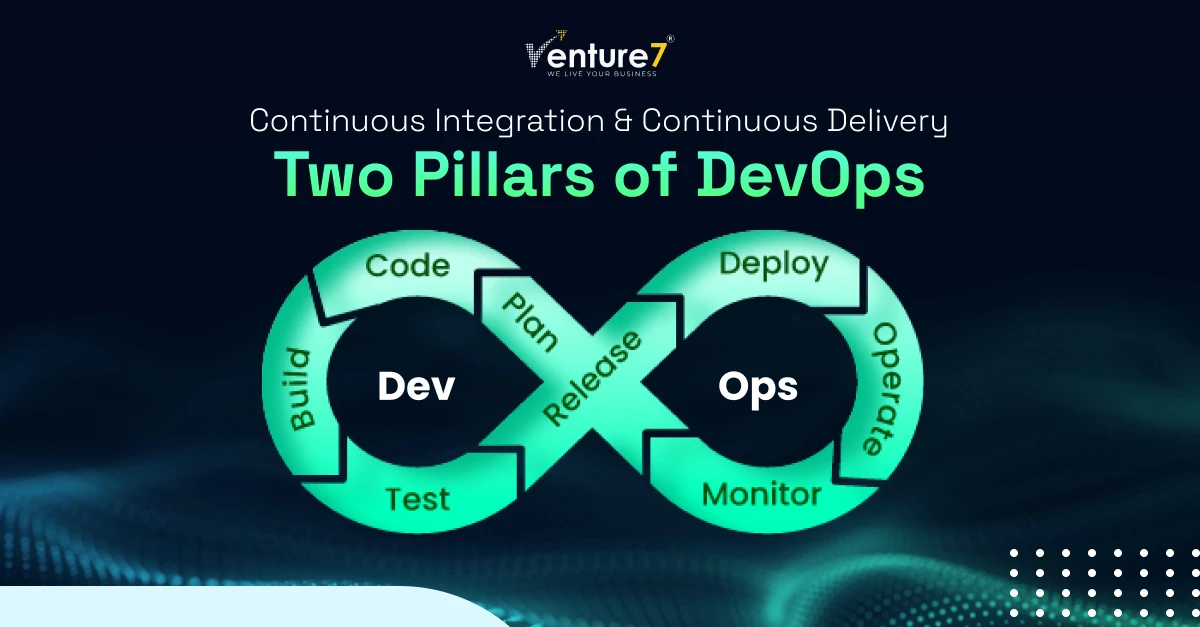Software development industries are evolving at a rapid rate as the conventional product development process does not serve the purpose of carrying out the operations in an efficient manner. The growing innovations have introduced many new models and DevOps is one of the most implemented trends in the development industry. The industries are rapidly shifting towards the use of the DevOps software development process as it has the ability to fit in the dynamic environment of the software development industry. This has proved to be the most efficient method to be implemented for the process.
DevOps has enabled the industries to deliver the software at a rapid rate and with no errors in the process. This process is carried out with the help of its two pillars, which include, continuous integration and continuous delivery. These methodologies work by involving various changes in codes and ensuring that there are no defects and conflicts during the process.
Continuous Integration refers to the development methodology that ensures integration of work products of individual developers into a shared and continuous repository. Earlier, the team used to build each feature in isolation and merge the features at the end, which led to frequent errors and wastage of time and resources. With the use of continuous integration, the development team continuously builds the product several times a day. This integration process is carried out frequently by various automated test cases, that ensure that the product development process is carried out without any defects or bugs. The continuous integration of new codes provides the agile software development teams to get quicker feedback as per the demands of the market and fix the problems in a short span of time.
This cycle is significantly used to forestall and fix the mistakes in the nearby adaptation of the code to simplify the interaction for the quality affirmation group and gives them a blunder free code to work with.
With the use of a continuous integration process, the manual effort is reduced to a great extent, with the use of highly advanced automation tools. These tools help in automating every aspect of the tests, making the process efficient and effective, thereby, making a successful delivery of products.
The development process becomes a lot more transparent with the use of continuous integration process. This ensures the development teams to know about the defects and the cause of the errors at an early stage. This makes it possible for the team to make real-time decisions, thereby improving the efficiency of the process.
Continuous integration helps the industries to cut down the costs to a great extent. Also, with the use of automation tools, the time which was used for manual testing is reduced enormously, thus optimizing the budget of the overall project.
The tools used in continuous integration methodologies highly depend on various test suites and test execution, that helps the industries to detect the errors well in advance and rectify them there and then.
Continuous Delivery refers to a process of product development that aims at easy deployment of all the changes in the process. It is generally known as an automated deployment pipeline in DevOps. This includes the process of continuous integration and automated testing that ensures the development of a high-quality product, in a short span of time and with the use of minimal resources. The changes are done to the production that includes configuration changes, error fixes, etc.
This process ensures delivering a high-quality product in the market, by automating most of the process. It allows the development team to focus on various phases of the product development process such as usability, performance testing, security, etc.
It also ensures continuous and easier deployment of the process by using diverse patterns. These patterns help the testers to ensure that the code is deployed at a lower risk, with no downtime.
The automated process also helps to reduce the burden of testers and carry out the process in a relaxed manner. The frequent releases of the products, helps the testers to interact with customers and get their feedback to improve the process with the use of new testing methodologies. These innovative testing methods helps to increase the quality of the product.
The industries use the continuous delivery methodology to produce the products in short cycles, by implementing new features as and when needed. Its aim is to build a reliable software product in a short span of time. Each step of the process is automated through the use of continuous delivery, which helps in minimizing the friction points. This allows the development team to release safe codes at any moment, by ensuring that the code is always in a deployable state, with the use of automated tools.
Both these methodologies of DevOps aim at integrating the development process with highly advanced tools and ensures rapid delivery of the software product. Continuous Integration mainly works by integrating the changes made in the code by the developers into the main unit frequently and in a short span of time. Continuous delivery mainly aims at making the code ready for deployment at any point in time. It also ensures a faster development cycle of the application by making the process automated and saving the configurations that are required to deploy a code.
As the competition is increasing with each passing day, the industries need to deploy error-free software in a short span of time to the market. The use of DevOps methodologies has transformed the product development process and has contributed to eliminating the limitations of the traditional methodologies. These methodologies have removed the obstacles that were earlier present in the software development process, making the process cost-effective and efficient.
The industries are embracing these methodologies to enable frequent delivery of the good-quality product by instilling better collaboration and improving communication in the whole process.
These methodologies have helped in cutting down the development complexities and shorten the development cycles and have enabled the industries to develop highly innovative software products.





